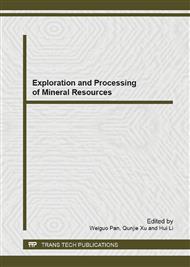p.168
p.172
p.177
p.181
p.186
p.192
p.196
p.202
p.207
Accumulation Conditions of Paleozoic Shale Gas and its Resources in Northeast Chongqing Areas
Abstract:
In order to carry out a more comprehensive discussion on shale gas accumulation conditions of Lower Cambrian Shuijingtuo Formation and Upper Ordovician Wufeng Formation-Lower Silurian Longmaxi Formation, the distribution, source rock conditions and reservoir conditions of these two shales are comprehensively analyzed, these two shales are both have the characteristics of high organic carbon content, high maturity, appropriate thickness and mainly typeⅠkerogen as source rocks, and interbedded with siltstone and/or fine sandstone, rich in quartz and other detrital components, easy to break and form the cracks, micro cracks as reservoirs, these characteristics provide a favorable material basis and reservoir space for shale gas accumulating. On this basis, the effective distribution areas of these two shales are further determined and shale gas resources are preliminary evaluated, eventually come to the results of shale gas resources of Lower Cambrian Shuijingtuo Formation and Upper Ordovician Wufeng Formation-Lower Silurian Longmaxi Formation respectively are 0.409×1012m3 and 0.389×1012m3.
Info:
Periodical:
Pages:
186-191
Citation:
Online since:
December 2013
Authors:
Price:
Сopyright:
© 2014 Trans Tech Publications Ltd. All Rights Reserved
Share:
Citation:


